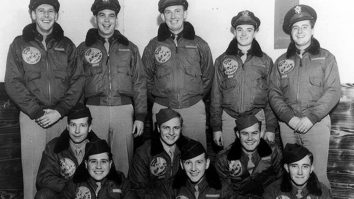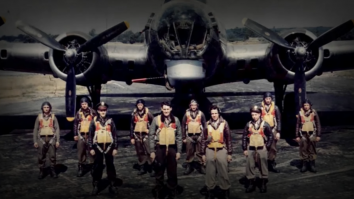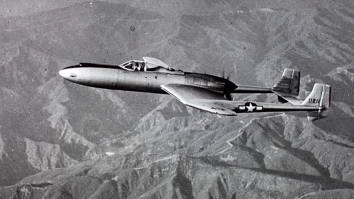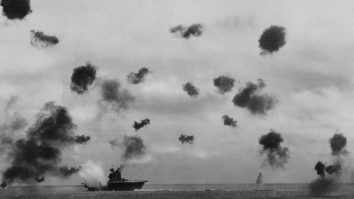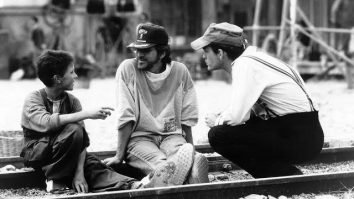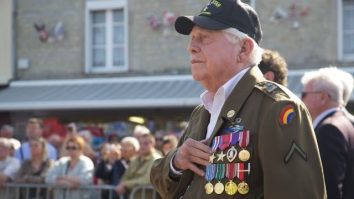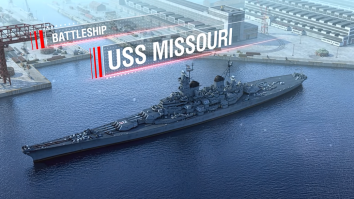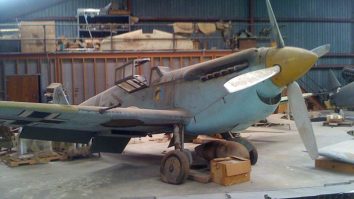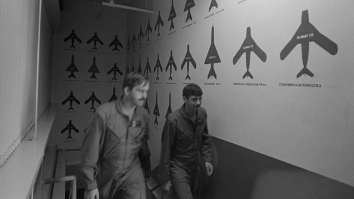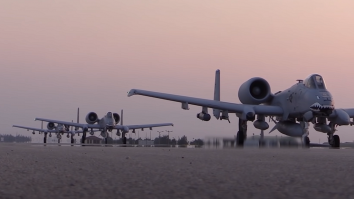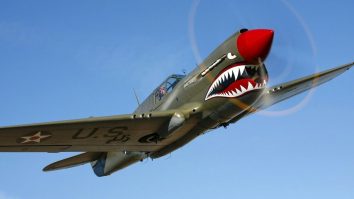The First Attack 1st Lt. Edmund Smith and his B-29 crew took off on January 27, 1945, from Isley Airfield for a bombing mission. Their main target was Tokyo’s Musashiho and Nakajima aircraft factories. Destroying these factories would help cripple the production of Japanese planes. However, just 15 miles out west near Mt. Fuji, their […] More
Chilling Discovery On November 23, 1944, a B-17 bomber crashed near a group of Allied soldiers in Belgium. As it crashed, witnesses noticed that the B-17’s engines were still running. The soldiers near the wreck waited in anticipation for the crew to exit the plane themselves. After all, there were no flares fired to signal […] More
Peaked Way Too Early It started out very promising but it went downhill pretty fast. That is the story of the Vultee XP-54 “Swoose Goose”, one of the many warbirds that never saw action during the war. The XP-54 was supposed to be the largest and heaviest single-engine plane made by America during WWII. On […] More
1. Zeros vs Dauntless On their way to escort the 18 Val dive bombers, 6 SBD Dauntless planes were spotted by the Japanese planes. Instead of focusing on the task at hand, the 6 Zeros who were supposed to escort the Vals decided to go for the Dauntless. The fight resulted in a stalemate with […] More
1. Ballard’s POV The film, Empire of the Sun, is loosely based on the experience of 12-year-old James Ballard in China. Ballard was a British kid born at the International Settlement of Shanghai, China. The movie shows Ballard struggling and being forced to grow up because of the war. 2. Ballard Played As A Guest […] More
1. Product Of The Great Depression The whole world was coming off of the Great Depression. Men and women from the Great Generation were formed by the hardships they experienced as kids during the depression. A study by Glen Elder showed that most of those children fared better in adulthood and knew how to solve […] More
1. The Last US Battleship USS Missouri is the last battleship that the US commissioned for the Navy. Designated as the BB 63, it was the youngest among its Iowa-class sisters. The ship served in many wars, starting from WWII, the Korean War, and ending after the Gulf War. 2. Built To Be Fast Looking […] More
1. Equal Representation For better or for worse, director Guy Hamilton wanted to represent both sides equally. This was seen as a very controversial move. After all, the effects of the second world war were still felt in some countries. Nevertheless, Hamilton was adamant about this, leading to some very interesting scenes and hiring decisions. […] More
1. Improved Kill-to-Loss Ratio Earlier results taken from the first half of the Vietnam War showed that the Navy’s losses were piling up. They were losing aircraft and aircrew at an alarming rate. After the program ran its course, the kill ratios from the second stage of the war favored the US better. According to […] More
1. Linkless Ammunition Feed The ammo used for the GAU-8/A goes through a linkless and double-ended ammunition feed. This linkless system significantly reduces the potential of jamming and allows the spent casings to be returned to the ammunition drum. In addition, it also prevents the expended shells from damaging the plane. 2. Redundant Hydraulic Systems […] More
1. Versatile and Reliable The PBY Catalina was relatively slow but versatile and reliable. So reliable in fact, that they were employed by every branch of the US military. Other nations also followed suit and made their own PBYs because of how valuable it was on the battlefield. 2. Great Spotters Catalinas were usually the […] More
1. Used in North African Campaigns The P-40 did not have a passable performance in northwestern Europe. Its lack of a two-stage supercharger made it relatively weaker than the Messerschmitts and Focke-Wulfe. Therefore, the decision was made to reassign the P-40 to the North African campaign which operated in Libya, Morocco, Tunisia, and Egypt. 2. […] More


